Joint research between TCFFI, USDA and EWOS uses new diet for post-smolt to food-size fish
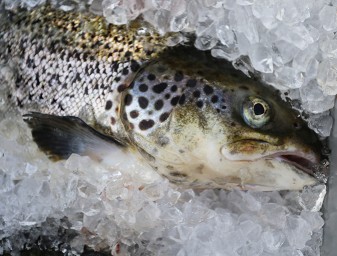
The objective of this project was to evaluate the effects of a fishmeal-free diet on Atlantic salmon post-smolt performance and fillet quality during growout to market-size in a commercial-scale, land-based, closed-containment system using water recirculation technology. The production system required the addition of very little new water (i.e., on average more than 99 percent of the water was being recycled at any given time), and captured the majority of waste solids during the trial. In addition, the system was equipped with multiple barriers that ensured that no salmon escaped to the outside environment and that no obligate fish pathogens entered the facility.
Formulation of test diet
The trial tested a sustainable, fishmeal-free diet fed to Atlantic salmon (Salmobreed, Norway) post-smolt that was formulated using major ingredients from North American sources, which enhanced the use of locally available nutrients and minimized the carbon footprint. The test diet did not use genetically modified ingredients and utilized byproducts from various food industry sectors such as fish oils sourced from a whitefish processing plant in Oregon, which qualified the end-product as achieving a zero wild fish in:farmed fish out ratio as defined by the Monterey Bay Aquarium’s Seafood Watch program (Seafood Watch, 2016) while still maintaining high levels of heart- and brain-healthy omega-3 fatty acids in the fillets.
The diet also included 80 ppm of natural astaxanthin to achieve optimal fillet pigmentation. Dr. Rick Barrows of the U.S. Department of Agriculture’s Agriculture Research Service (USDA ARS) and Jason Mann of EWOS Canada formulated the diet. EWOS Canada produced the diet and is excited about its commercial market potential, because it can be produced competitively with standard salmon diets.
Fish performance
We began feeding this diet to Atlantic salmon post-smolt at approximately 0.6 kg mean size, beginning the first week of May, 2015. Notably, the diet did not appear to create loose, diarrhea-like fecal pellets, which can create problems in recirculation aquaculture systems.
The salmon performed well, producing an average of 397 grams per month linear growth with 97 percent survival during the 10-month growout period, which ended with weekly harvests beginning in early March and finishing in mid-April of 2016. Fish losses were very low, with approximately 1 percent lost to each of the following: (i) in-tank mortality, (ii) jumping out of the tank, and (iii) culls due to unthriftiness or external lesions.
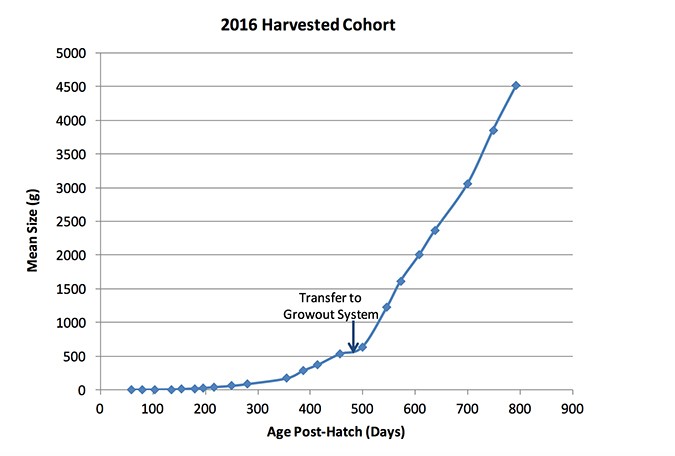
Overall, fish welfare was excellent with no vaccination, disease outbreaks, sea lice or toxic algae. The fish exhibited excellent health, no chemicals or antibiotics were added to their feed, and the only therapeutic treatments used were the occasional application of low levels of sodium chloride (salt) during growout, as well as several treatments of hydrogen peroxide (H2O2) during the nursery stage. Salmon were continuously exercised at their optimum swimming speed (i.e., at or just below one body length per second) and water quality, particularly dissolved oxygen, was maintained at optimum levels at or above saturation throughout the production cycle. Overall feed conversion averaged 1.18. As with the last cohort of SalmoBreed germplasm, almost no fish were lost to fungal episodes (i.e., external Saprolegnia spp. infection).
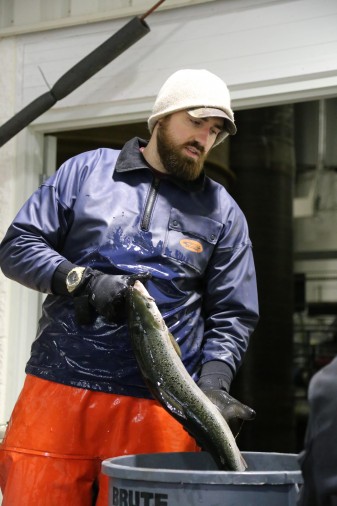
A harvest of early maturing male salmon was completed in October at a mean size of approximately 2.5 kg. At this time, approximately 30 percent of the population was harvested as they approached maturity compared to 18 percent that were removed from each of the two previous cohorts. There appeared to be a strong genetic component to maturation with this cohort, as we noted that one of two marked lines of salmon had a very high incidence of early maturation.
Lipid analysis of salmon fillets
Salmon fillets collected a month before the first harvest were sent out for lipid analysis. Overall lipid content in the samples averaged 15.9 percent, which is on par with previous cohorts of 4-5 kg Atlantic salmon produced at our facility. The EPA (eicosapentaenoic acid), DHA (docosahexaenoic acid), and total omega-3 fatty acid levels in fillets averaged 0.491, 0.792, and 1.64 percent, respectively; thus a 6-ounce salmon fillet contained approximately 220 mg of EPA and DHA combined, as well as approximately 280 mg of omega-3 fatty acids. Thus, just one 6-ounce fillet nearly meets suggested guidelines for daily consumption of 250 mg for combined EPA and DHA. In addition, relatively healthy monounsaturated fatty acids in fillets averaged 5.6 percent and polyunsaturated fatty acids averaged 3.7 percent. In contrast, relatively unhealthy trans fatty acids in fillets averaged only 1.2 percent.
Fillets were also tested for PCBs, pesticides and mercury. The results showed that these fish were below the detection limit of the test method used for almost all of the parameters tested, or were detected at levels well below federal agency limits.
Marketing
To receive consumer feedback on these fish, the salmon are being marketed at a mean size of 4.5 to 5 kg through JJ McDonnell (Jessup, Maryland), with many of the fish ending up at 15 Wegmans grocery stores in Maryland and Virginia. Feedback from consumers and chefs was quite positive. Consumers also appreciated the opportunity to purchase a “locally produced” salmon. In addition, these salmon met the “best choice” ranking of the Seafood Watch program of the Monterey Bay Aquarium.
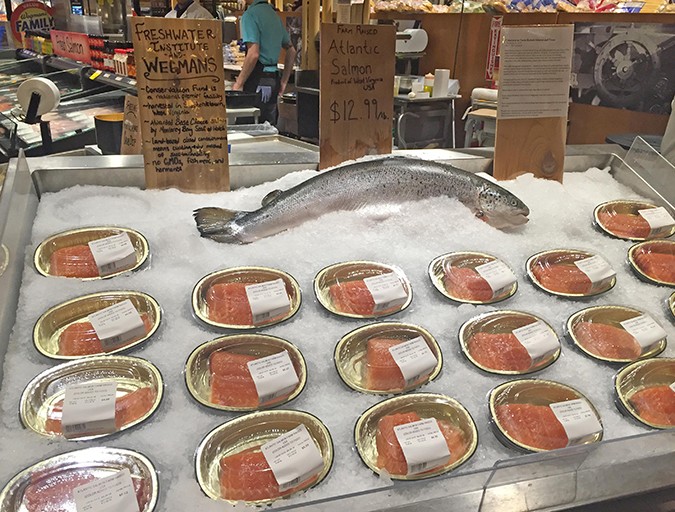
Perspectives
This initiative is providing data on growth rate, survival, fish density, and early maturation of male salmon, as well as feed conversion, primary variable costs, waste loads, fish health, pesticide/antibiotic use, food quality characteristics, and other key parameters for Atlantic salmon production to food-size over 26 months (post hatch) within a freshwater commercial-scale closed containment system at The Freshwater Institute. The novel feed developed and information obtained through this practical and scientific study will assist with future decision-making by the entire North American salmon farming industry, Government regulators, funders, and conservation advocates, resulting in better-informed decisions for future salmon feed and farming in Canada and the USA.
This research was funded by the Atlantic Salmon Federation (New York), the Gordon and Betty Moore Foundation (Palo Alto, Calif.), and SalmoBreed AS (Bergen, Norway).
Authors
-
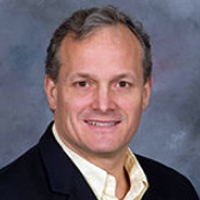
Steven Summerfelt, Ph.D.
Director of Aquaculture Systems Research
The Conservation Fund Freshwater Institute
1098 Turner Road
Shepherdstown, WV 25443 USA[160,194,103,114,111,46,101,116,117,116,105,116,115,110,105,114,101,116,97,119,104,115,101,114,102,64,116,108,101,102,114,101,109,109,117,115,46,115]
-

Travis May
Aquaculture Production Manager
The Conservation Fund Freshwater Institute
1098 Turner Road
Shepherdstown, WV 25443 USA[103,114,111,46,101,116,117,116,105,116,115,110,105,114,101,116,97,119,104,115,101,114,102,64,121,97,109,46,116]
-

Curtis Crouse, M.S.
Assistant Aquaculture Production Manager
The Conservation Fund Freshwater Institute
1098 Turner Road
Shepherdstown, WV 25443 USA[103,114,111,46,101,116,117,116,105,116,115,110,105,114,101,116,97,119,104,115,101,114,102,64,101,115,117,111,114,99,46,99]
-
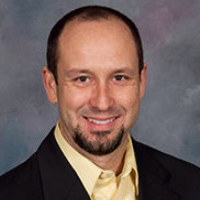
John Davidson, M.S.
Senior Research Associate
The Conservation Fund Freshwater Institute
1098 Turner Road
Shepherdstown, WV 25443 USA[160,194,103,114,111,46,101,116,117,116,105,116,115,110,105,114,101,116,97,119,104,115,101,114,102,64,110,111,115,100,105,118,97,100,46,106]
-

Rick Barrows, Ph.D.
Research Physiologist (Fish)
USDA ARS
4050 Bridger Canyon Road
Bozeman, MT 59718 USA
[118,111,103,46,97,100,115,117,46,115,114,97,64,115,119,111,114,114,97,66,46,107,99,105,82]
-
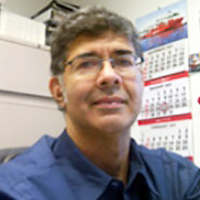
Jason Mann, M.Sc.
Managing Director
EWOS Canada Ltd. (now Cargill Aquaculture Nutrition; CQN)
7721 - 132nd Street
Surrey, BC V3W 4M8, Canada
[109,111,99,46,108,108,105,103,114,97,99,64,110,110,97,77,95,110,111,115,97,74]
-

Christopher Good, Ph.D., D.V.M.
Director of Aquatic Veterinary Research
The Conservation Fund Freshwater Institute
1098 Turner Road
Shepherdstown, WV 25443 USA
[160,194,103,114,111,46,101,116,117,116,105,116,115,110,105,114,101,116,97,119,104,115,101,114,102,64,100,111,111,103,46,99]
Tagged With
Related Posts
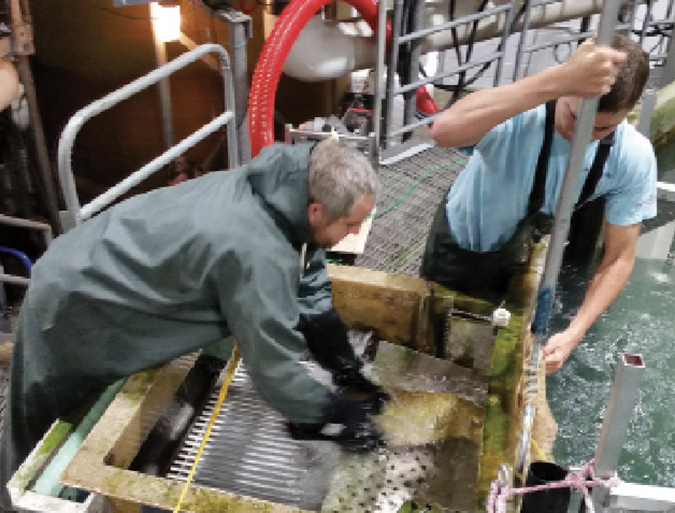
Health & Welfare
Novel air-based system transfers large salmon during harvest
To evaluate the application of an air pressure-based transport method within a recirculating aquaculture system, the authors performed testing with harvest-size salmon at The Conservation Fund Freshwater Institute.
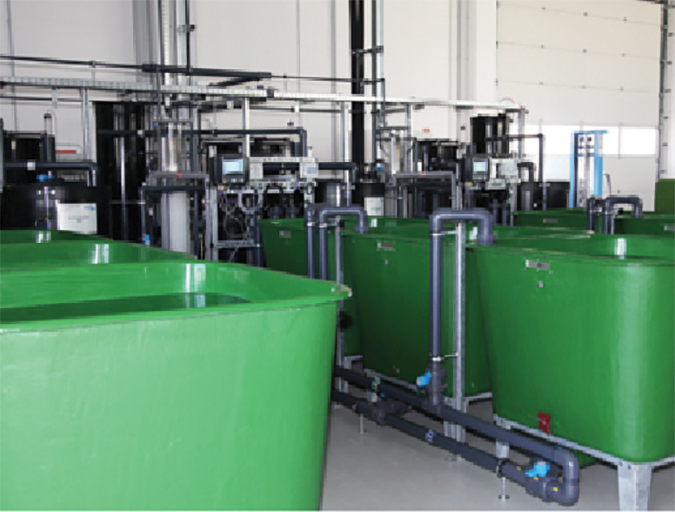
Health & Welfare
Biofilter inoculation in recirculating aquaculture systems
Biological filters are essential parts of recirculating aquaculture systems that transform toxic fish compounds such as ammonium and nitrite into less-harmful nitrate. The authors tested the convenience and efficiency of three methods for the initial inoculation of aerobic biofilters.
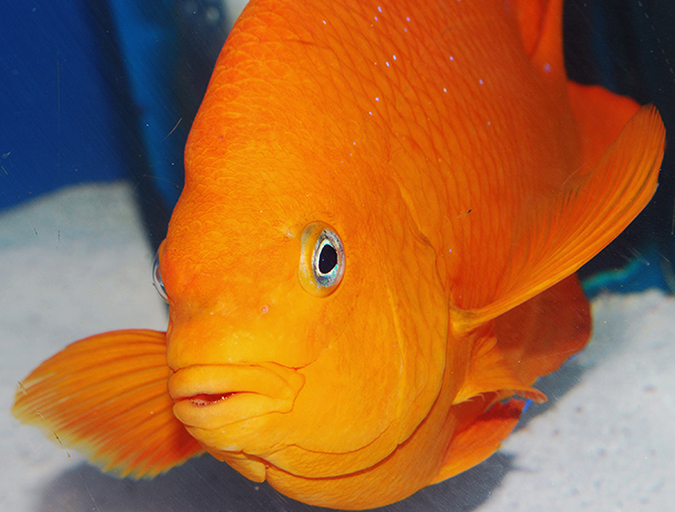
Aquafeeds
The importance of carotenoids in aquafeeds
Carotenoids are important pigments that contribute characteristic quality criteria for the marketing of aquaculture products. Aquatic animals cannot biosynthesize carotenoids de novo, hence their inclusion in aquafeeds is important because they are associated with various metabolic functions.
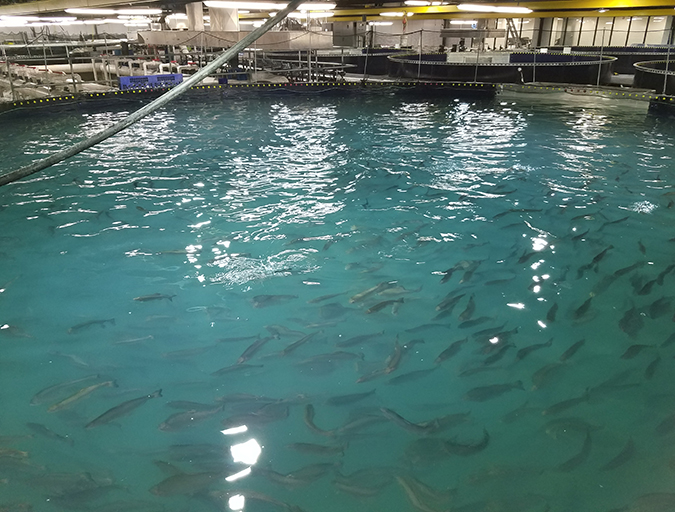
Intelligence
A land grab for salmon (and shrimp) in upstate New York
The operators of Hudson Valley Fish Farm see their inland locale as a pilot to prove that land-based fish farming, located in close proximity to major metropolitan markets, can be successful.

